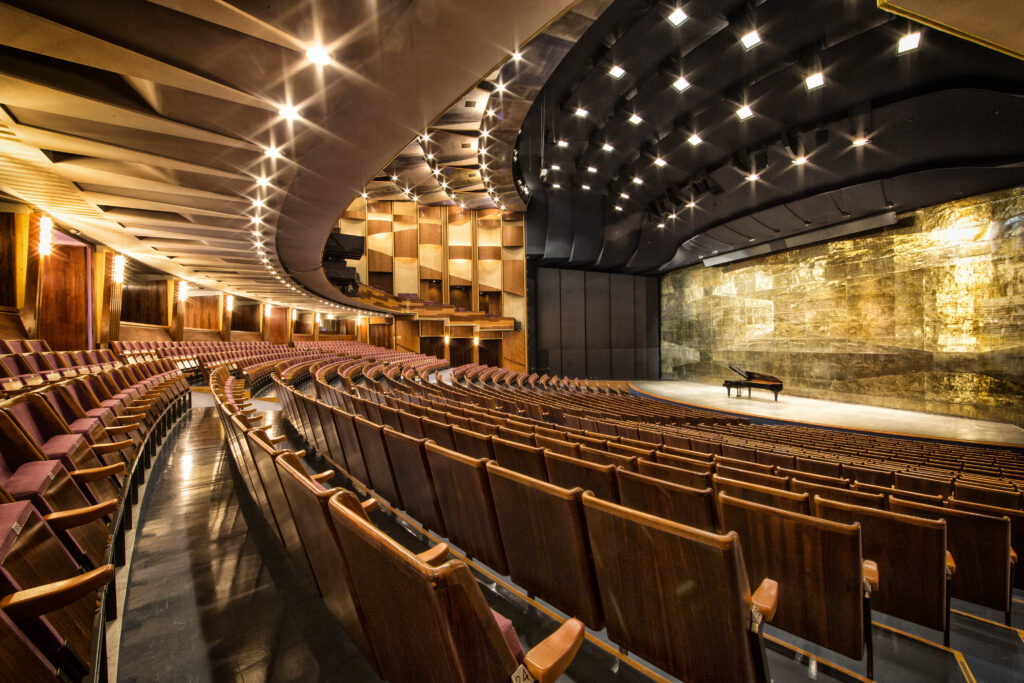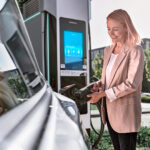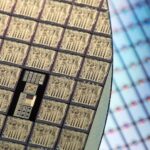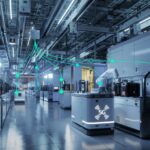Sound of Science – Digital twin of “Großes Festspielhaus” in Salzburg, Austria
Siemens has developed a digital twin especially for event halls. This allows the acoustics and structure of the building to be reproduced realistically and simulated very precisely. The “Sound of Science” application was used for the first time in the Grosses Festspielhaus at the Salzburg Festival. The application allows event operators to virtually explore how the acoustics change with different hall configurations in order to select the best possible acoustic scenario – for example, how adding acoustic panels affects the acoustical experience. In addition, orchestral arrangements can be tested and arranged on stage in advance – before a note is heard in the real world. This saves money, resources and time. Sound of Science” can also be used in the conversion and new construction of event halls.
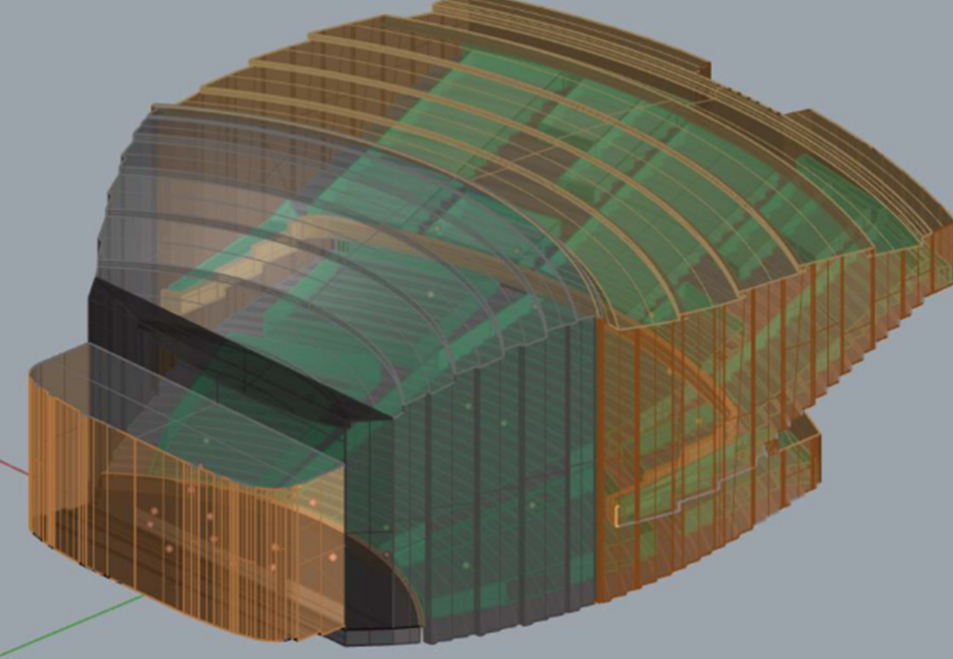 © Siemens
© Siemens3D simulation of “Grosses Festspielhaus” in Salzburg.
“With Sound of Science, we are mapping the future: digital twins are not only transforming the everyday lives of many companies, but also creating new opportunities for the cultural and creative industries,” says Stephan Frucht, Artistic Director of the Siemens Arts Program. “This will allow us to plan stage productions better in future and even simulate them acoustically in advance. We are delighted to have the Salzburg Festival at our side as a long-standing partner who recognizes the opportunities offered by such innovations.”
Premiere at the Salzburg Festival
Siemens is making the “Sound of Science” app available free of charge to selected partners from the cultural scene as a demonstration application. There are currently no plans to distribute the application. However, the application’s simulation solutions are available to buy. Siemens plans to open up further halls digitally – including concert halls in Germany and England. At the Salzburg Festival, the application could be experienced by the public for the first time using VR glasses.
“Siemens and the Salzburg Festival share a common passion for excellence and innovation and we are delighted to be part of this pioneering technological development and innovation as part of our long-standing close and trusting partnership,” says Kristina Hammer, President of the Salzburg Festival. “We are excited to see what diverse applications will arise from Sound of Science in the future.”
Basic technology Simcenter
The technologies used are part of the Siemens simulation solution Simcenter, that has been part of the company’s core business for over 15 years. This technology is mostly used in industry – for example, for the acoustic optimization of vehicle interiors or for protection against road noise. For “Sound of Science”, the Simcenter uses a combination of impulse response measurements and ray tracing for the respective 3D model of the event hall. These can measure the echo and reverberation of a note and simulate how sound waves propagate in a room. Depending on the material, reflections of sound waves behave differently. Those that bounce off a concrete wall react differently to those that hit a carpet or reach an ear directly. In this way, the simulation can reproduce the individual sound signature of the individual event halls. For all intents and purposes their “acoustic DNA”.
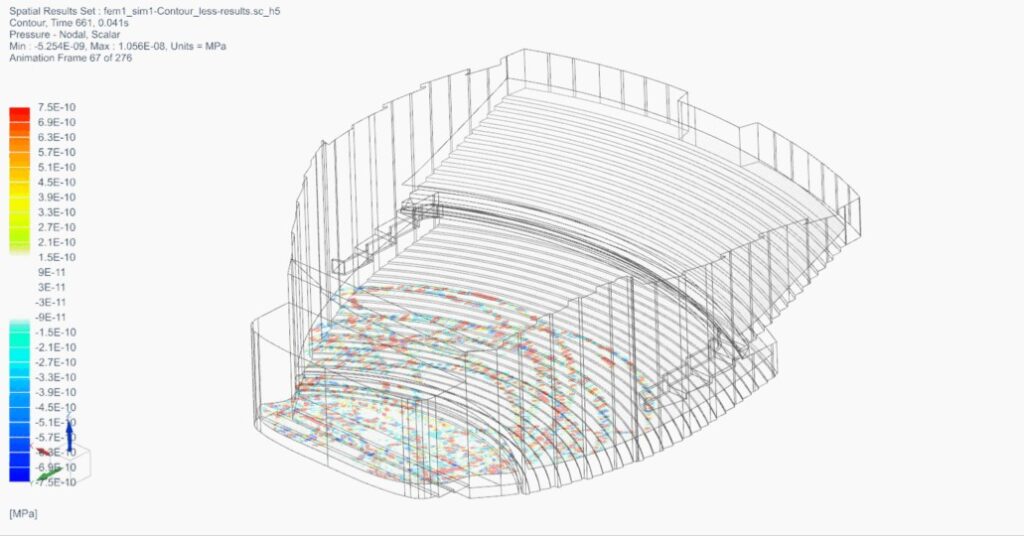 © Siemens
© SiemensSimulation of the propagation of sound waves.
Siemens has been working closely with the Salzburg Festival for around 30 years. The company has also supported the festival as a main sponsor since 1999. Since 2002, the Siemens Fest>Spiel>Nächte have been held on Kapitelplatz at the same time as the Salzburg Festival. Since its inception, the open-air event has offered more than a million visitors the opportunity to experience historical and current festival productions on an LED screen free of charge. In addition, some of the Salzburg Festival’s venues are equipped with Siemens technology in the areas of building automation, security and acoustics.
